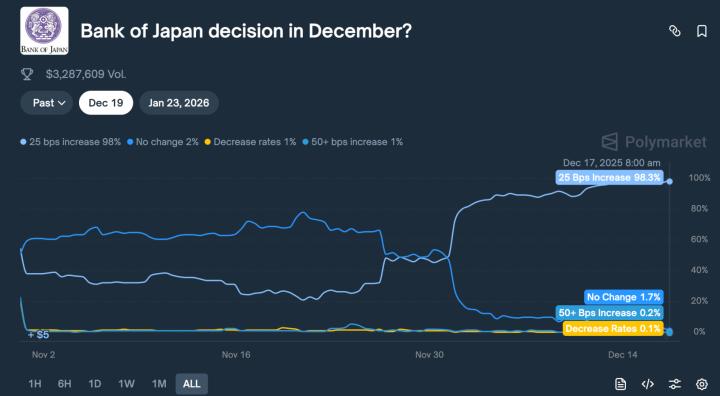The total stablecoin market value is expected to reach $1 trillion by 2030. As more financial institutions and companies adopt stablecoins, market demand will further grow, driving the increasing importance of stablecoins in the global financial system.
Author: Aiying 艾盈, AiYing Compliance
Cover: Photo by Vimal S on Unsplash
Over the past decade, the global financial system has undergone significant changes, among which the rise of stablecoins has become one of the most eye-catching developments. Stablecoins are digital currencies pegged to fiat currencies (usually the US dollar) that aim to maintain price stability and avoid the high volatility of other cryptocurrencies such as Bitcoin. This feature makes stablecoins an important financial tool, playing an increasingly important role in global payments, cross-border transactions, and financial inclusion. Aiying has also mentioned many regulatory policies and operating logics of stablecoins in various countries in previous articles. For details, please refer to: Special Stablecoin Album , Crypto Payment Album
- [Ten thousand words long research report] Stablecoin track: model, operating principle, trend and thinking of Hong Kong stablecoin
- French financial institution SG Forge obtains stablecoin issuance qualification under MiCA Act and white paper analysis
- Hong Kong Monetary Authority and Financial Services Bureau: Stablecoin Licensing Regulatory Guidelines and Recommendations
- The IRS has finalized new rules: Cryptocurrency and stablecoin transactions must be reported, with details on gross income and basic reporting
Today, we will look at the development trajectory of stablecoins in the global market and their profound impact on the economy through the report "A Decade of Digital Dollars" written by the Center for Economic and Business Research (Cebr). Aiying sorted out the core content of the report for everyone by sorting out and studying the content of the report, so that everyone can have a comprehensive perspective on the role of stablecoins in promoting global financial innovation and efficiency.
Part 1: The Birth and Development of Stablecoins
1. The origin of stablecoins
The concept of stablecoins was born in response to a major pain point in the cryptocurrency market: price volatility. Despite the advantages of decentralization and transparency, Bitcoin and other cryptocurrencies have volatile prices, making them difficult to use as a stable means of storing value or as a currency for daily transactions. This volatility not only affects the popularity of cryptocurrencies, but also limits their application in financial markets.
To address this problem, stablecoins came into being. Stablecoins are cryptocurrencies pegged to fiat currencies (such as the U.S. dollar) that keep their prices stable by anchoring their value to relatively stable assets. The main types of stablecoins include fiat currency-backed (such as USDT, USDC), crypto asset-backed, and algorithmic stablecoins. The common goal of these stablecoins is to provide a stable and predictable means of storing value and reduce the impact of price fluctuations on users.
2. Early Development
The early development of stablecoins was mainly focused on cryptocurrency traders and trading platforms. Due to the large price fluctuations of Bitcoin and other cryptocurrencies, traders need a stable asset for hedging and value storage. Stablecoins provide this function, allowing traders to make quick conversions within the cryptocurrency market without having to exit the cryptocurrency ecosystem. This function is particularly useful for platforms that cannot directly exchange cryptocurrencies for fiat currencies. Over time, the application of stablecoins has gradually expanded to a wider range of scenarios. The following are several key early development stages:
- Adoption by trading platforms : Major trading platforms have begun to support stablecoin trading pairs, allowing users to avoid the risk of price fluctuations during trading. This measure has greatly improved trading liquidity and market stability.
- Cross-border payments : Stablecoins are gradually being used for cross-border payments due to their low fees and fast settlement, especially in areas where the traditional financial system is inefficient. The instant settlement capability of stablecoins makes them an important tool for cross-border remittances.
- Decentralized Finance (DeFi) : With the development of blockchain technology, the application of stablecoins in the decentralized financial ecosystem has also grown rapidly. Stablecoins have become the main medium of exchange on DeFi platforms and are used for a variety of financial services such as lending, borrowing, payment, and liquidity provision.
Through these early developments, stablecoins not only solve the volatility problem of the cryptocurrency market, but also provide new solutions for a wider range of financial applications. The successful promotion of stablecoins has laid the foundation for their important role in the global financial market and gradually become a key component of the digital financial era.
Part 2: Growth of Stablecoins over the Past Decade
1. Market size and transaction volume
The stablecoin market has experienced significant growth over the past decade. According to data from the report “The Decade of Digital Dollars”, the total stablecoin market value has grown from less than $1 billion in 2014 to $165 billion in 2024. This growth not only reflects the increasing importance of stablecoins in the cryptocurrency market, but also reflects their growing influence in the global financial system.
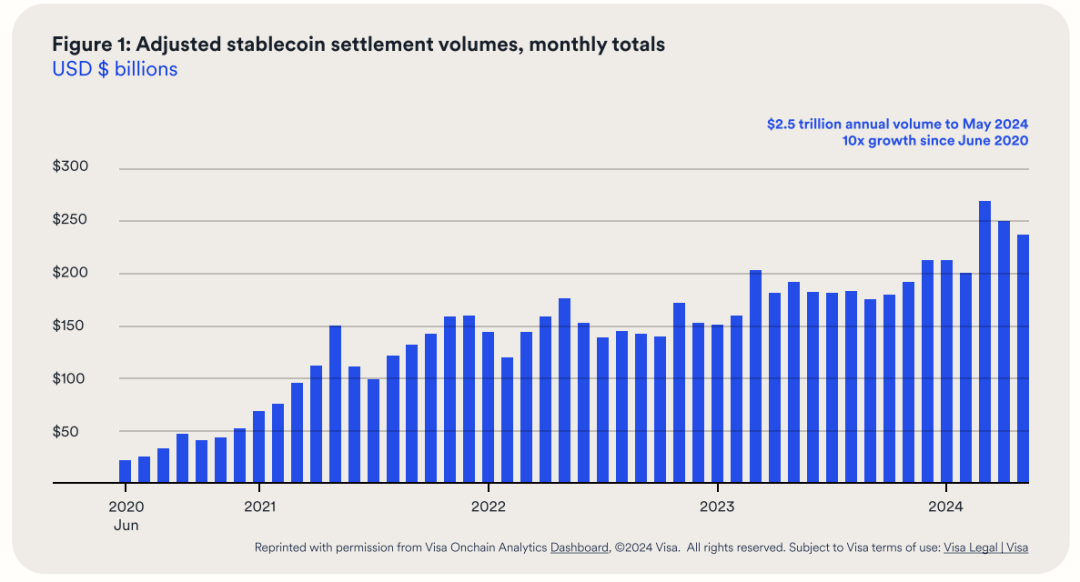
In addition, the transaction volume of stablecoins has also shown explosive growth. In 2023, the total transaction volume of stablecoins reached nearly 7 trillion US dollars, of which Tether (USDT) accounted for about two-thirds of the market share . According to Visa's Onchain Analytics Dashboard data, even if factors such as high-frequency trading and institutional large-value transfers are excluded, the stablecoin payment settlement volume still reached 2.5 trillion US dollars in the 12 months before May 2024. This data shows that stablecoins are increasingly used in global payments and cross-border transactions, and the market demand is strong.
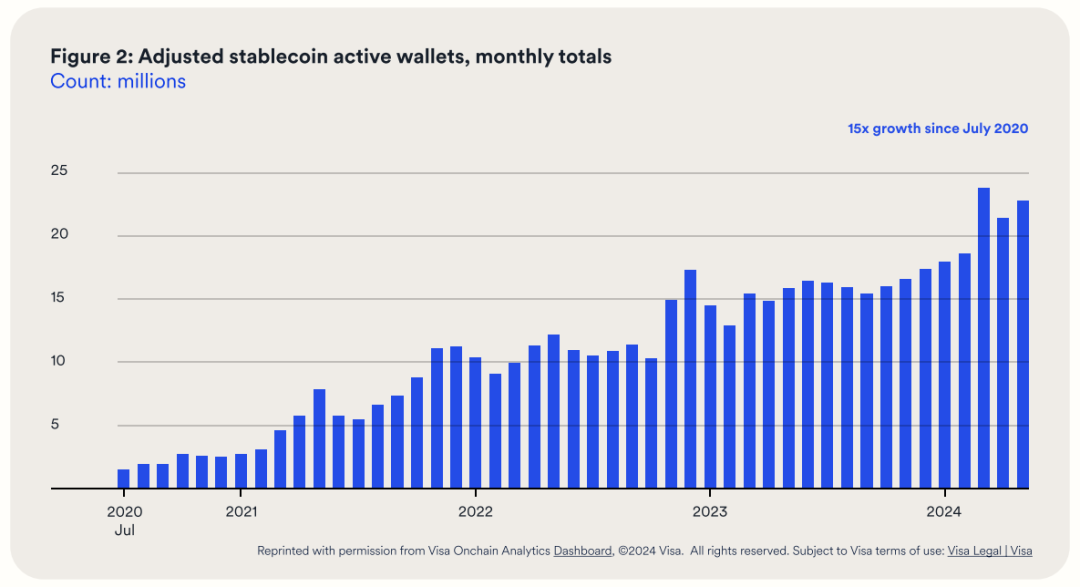
2. Major publishers
- Tether (USDT) :
- Company Background : USDT is issued by Tether and is the earliest and currently the largest stablecoin by market value. USDT maintains the stability of its value by pegging each token to one US dollar.
- Market application : USDT is widely used in major cryptocurrency exchanges as a trading pair and hedging tool. In addition, USDT is also used in cross-border payments and decentralized finance (DeFi) platforms to provide liquidity support.
- USD Coin (USDC) :
- Company Background : USDC is jointly issued by Circle and Coinbase and is currently the second largest stablecoin by market value. Circle is committed to enhancing the market reputation of USDC through a transparent and compliant operating model.
- Market application : USDC is widely used in cross-border payments, DeFi, and corporate payment solutions. In Visa's cross-border settlement pilot project, Crypto.com uses USDC for global settlement.
- First Digital USD (FDUSD) :
- Company Background : FDUSD is issued by First Digital and is a stable currency that has rapidly emerged in the Asian market in recent years. First Digital is committed to providing secure and stable digital asset custody and tokenization services.
- Market application : FDUSD has performed well in the Asian market, especially in countries such as the Philippines and Indonesia, solving the problem of insufficient financial services for local residents. FDUSD helps users in these countries make cross-border payments and store value through its stable value and fast settlement speed.
Part III: Economic Impact of Stablecoins
1. Mitigating the costs of currency fluctuations
Currency fluctuations have had a profound negative impact on the economies of emerging market countries. According to the report "The Decade of Digital Dollars", currency fluctuations caused 17 emerging market countries to lose a total of US$1.2 trillion in GDP between 1992 and 2022, accounting for 9.4% of these countries' GDP. Stablecoins help these countries cope with the uncertainty and economic losses caused by currency fluctuations by providing a stable value pegged to the US dollar.
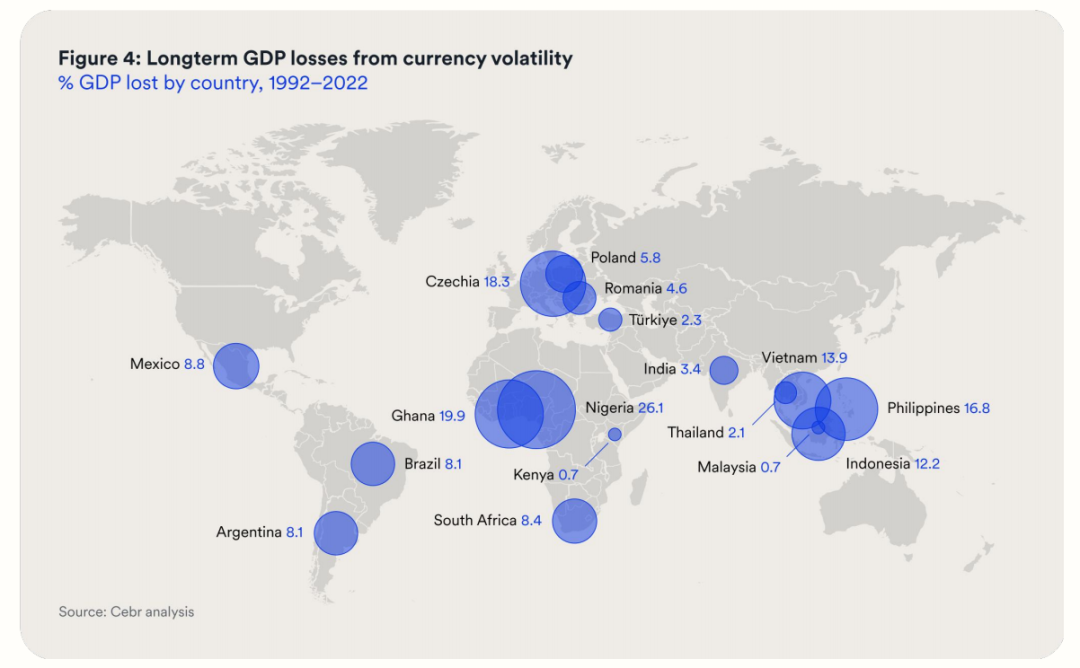
Percentage of long-term GDP loss due to currency fluctuations in different countries between 1992 and 2022
- Indonesia : The report shows that Indonesia lost $184 billion in GDP due to currency fluctuations between 1992 and 2022. By using stablecoins, Indonesia can provide individuals and businesses with a stable means of storing value, reduce the impact of currency depreciation, and protect savings and investments.
- Brazil : Brazil's GDP loss in the same period reached $172 billion. The application of stablecoins in Brazil enables companies to avoid the risk of exchange rate fluctuations, ensure the stable execution of commercial contracts, and improve the accuracy and reliability of financial planning.
2. Bridging the dollar gap
In many emerging market countries, it is difficult and costly to obtain US dollars, which limits their participation in international trade and financial activities. Stablecoins, as digital dollars, provide these countries with a stable and convenient alternative to the US dollar, meeting their demand for stable currencies.
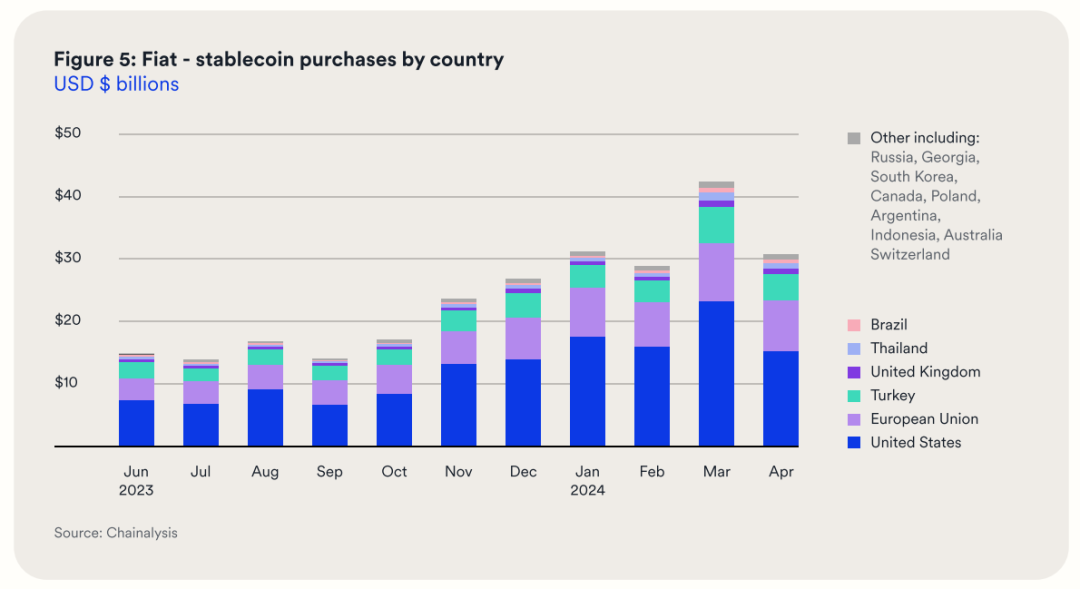
Purchases of stablecoins using fiat currencies by country from June 2023 to April 2024
The chart shows that the purchase volume of stablecoins has generally increased from June 2023 to April 2024, especially reaching a peak of nearly $5 billion in March 2024. This shows that the market demand for stablecoins is increasing. The United States is the largest stablecoin buyer, followed by the European Union and the United Kingdom. The purchase volume in these regions far exceeds that of other countries, reflecting the high demand and acceptance of stablecoins in these countries. The purchase volume at the end and beginning of each year increases significantly, which may be related to factors such as corporate annual settlement and increased demand for cross-border payments.
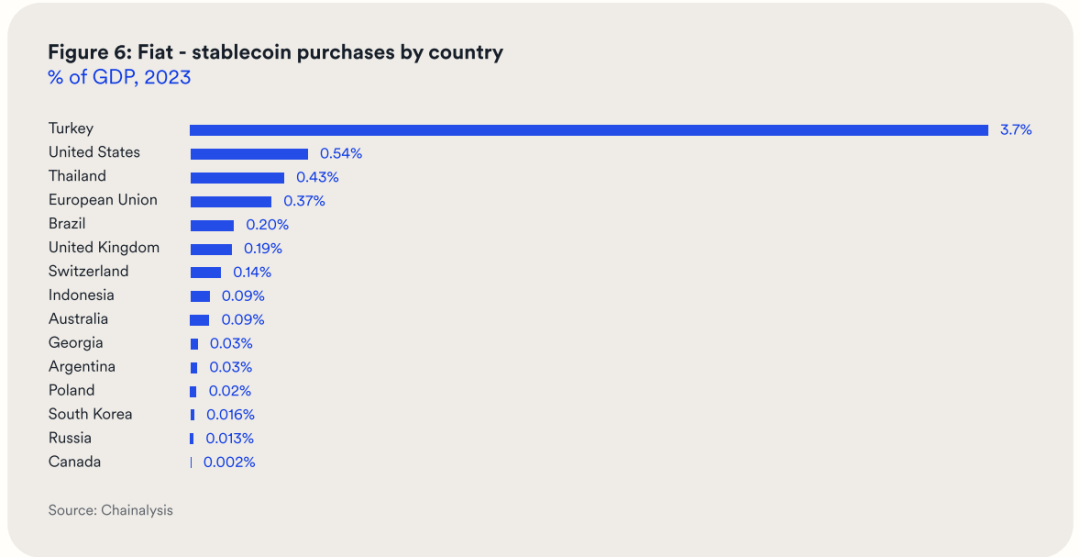
The amount of stablecoins purchased with fiat currency in different countries as a percentage of their GDP in 2023
Among them, Turkey used legal tender to purchase stablecoins, accounting for 3.7% of its GDP, which is much higher than other countries. This shows that Turkish residents and businesses have a very high demand for stablecoins, which may be caused by the severe depreciation of Turkey's own currency and economic instability. In addition, emerging market countries such as Thailand (0.43%), Brazil (0.20%) and Indonesia (0.09%) also showed significant demand for stablecoins.
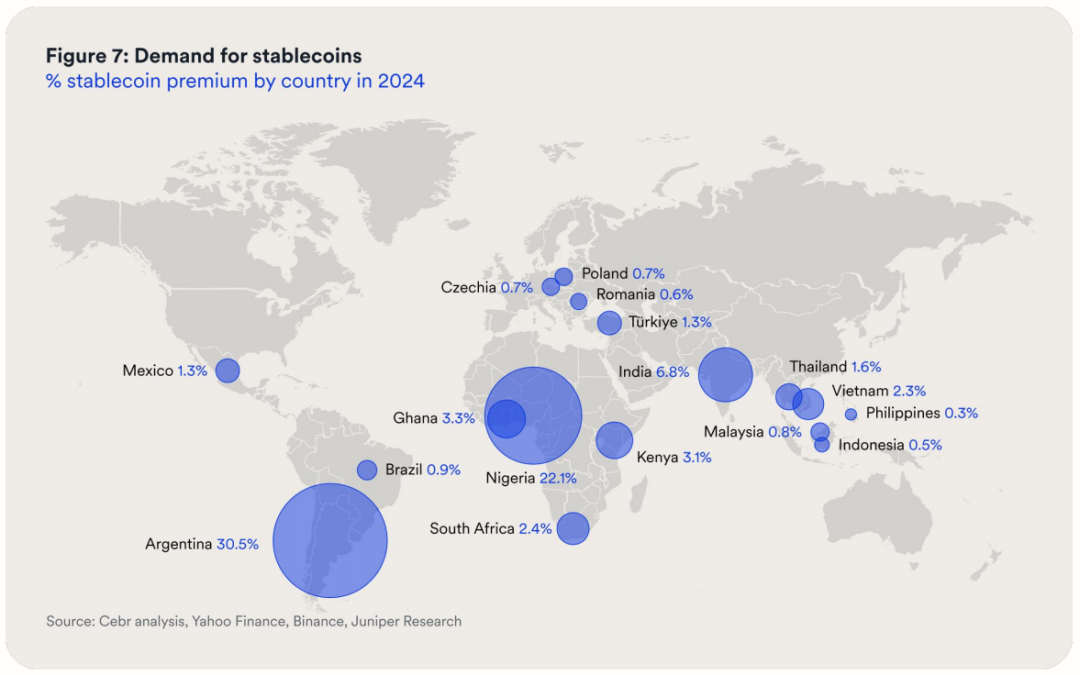
Stablecoin premium percentage by country
- The report pointed out that in 2024, the total premium paid by emerging market countries for stablecoins will reach US$4.7 billion, and this figure is expected to increase to US$25.4 billion in 2027. Taking Argentina as an example, the country's stablecoin premium can reach up to 30%, showing a strong demand for stablecoins.
- Stablecoins allow businesses and individuals in these countries to quickly and securely obtain and use U.S. dollars without relying on the traditional banking system, greatly reducing the cost and complexity of obtaining U.S. dollars.
People and businesses are willing to pay a higher price than the legal dollar to obtain stablecoins, which is the so-called "stablecoin premium". Stablecoins can be transferred globally almost instantly and operate 24/7 all year round. They can be accessed with just an Internet connection. Through the display of market data, it can be seen that stablecoins have made great progress and widespread application in the past decade. Stablecoins not only occupy an important position in the cryptocurrency market, but also play an increasingly important role in global payments, cross-border settlements and financial inclusion.
Among them, Argentina's stablecoin premium is as high as 30.5%, and Nigeria has reached 22.1%, which shows that residents and businesses in these countries have extremely high demand for stablecoins. This is because the local currencies of these countries have depreciated severely and the economy is unstable, causing people to turn to stablecoins to protect their assets. This is also mentioned in detail in AIying's previous article " 【Research Report】In-depth Analysis of the Latin American Cryptocurrency Market in 2024: A Detailed Interpretation from Legalization in El Salvador and Brazil to Regional Innovation ".
3. Release trapped funds
The inefficiency of the traditional cross-border payment system has caused a large amount of funds to be trapped during the transfer process, which has a negative impact on the liquidity and operational efficiency of enterprises. Stablecoins significantly reduce the time of capital retention by speeding up payment settlement, thereby releasing trapped capital.
precise data :
- According to the report, global cross-border B2B payments are expected to reach $40.1 trillion in 2024, of which $1.16 billion will be trapped in the payment process. Stablecoin payments can shorten settlement time from days to minutes, greatly improving the turnover efficiency of funds.
- It is estimated that by 2027, these released funds will bring companies an additional economic return of US$2.9 billion, significantly improving their operational efficiency and market competitiveness.
Part IV: Policy and Regulation
The development of stablecoins cannot be separated from the support and guidance of policies and regulations. Aiying summarizes the regulatory attitudes and frameworks of different countries and regions towards stablecoins.
Hong Kong: The Hong Kong Monetary Authority (HKMA) announced the list of participants in the "Sandbox" for stablecoin issuers on July 18 this year. JD CoinChain Technology (Hong Kong) Co., Ltd., Yuanbi Innovation Technology Co., Ltd., Standard Chartered Bank (Hong Kong) Co., Ltd., Ansai Group Co., Ltd., and Hong Kong Telecom Co., Ltd. are all included. It is expected that the official launch of stablecoins should be realized this year. For more information, please visit:
- 【HKMA】14 questions to understand the consultation conclusion on the legislative implementation proposals for the regulatory regime for stablecoin issuers in Hong Kong
- Hong Kong Monetary Authority and Financial Services Bureau: Stablecoin Licensing Regulatory Guidelines and Recommendations
- [Details] The HKMA announced the list of participants in the stablecoin issuance "sandbox", and five institutions were approved to participate [10,000-word long research report] Stablecoin track: model, operating principle, trend and thinking of Hong Kong stablecoin
Singapore: Singapore is also at the forefront of digital asset regulation. On January 14, 2019, the Monetary Authority of Singapore (MAS) promulgated the Payment Services Act (PSA), which officially came into effect on January 28, 2020, providing a clear regulatory framework for the issuance, trading and use of stablecoins and other digital assets, and promoting the legalization and standardization of the market. The implementation of PSA is expected to attract more traditional financial institutions and enterprises to enter the stablecoin market and promote the widespread use of stablecoins in Singapore. For more information, please visit:
- [Long Article and Illustrations] Comprehensive Interpretation of Singapore’s Payment Business Regulatory Framework and Virtual Asset DPT License Requirements
- Paxos receives approval from Singapore’s central bank to issue stablecoins in line with Singapore’s framework
- 24 Years of Singapore Fund Structure Establishment and Regulatory Requirements (Virtual Assets)
- Singapore Virtual Asset Fund Management in 2024: Overview of Licensing Requirements and Exemption Guidelines
Europe : Europe is at the forefront of digital asset regulation. In 2024, Europe took the lead in launching a cross-jurisdictional digital asset regulatory framework, the Markets in Crypto-Assets Act (MiCA). The Act provides clear legal guidance for the issuance, trading and use of stablecoins and other digital assets, promoting the legalization and standardization of the market. The implementation of MiCA is expected to attract more traditional financial institutions and enterprises to enter the stablecoin market and promote the widespread use of stablecoins in Europe. For more information, please visit:
- In-depth analysis and latest adjustments to the EU MiCA Act's restrictions on the use of stablecoins
- French financial institution SG Forge obtains stablecoin issuance qualification under MiCA Act and white paper analysis
- A long article analyzing the historical opportunities and starting points of Circle's compliance with the MiCA Act to issue USDC and EURC
- Key dates, compliance strategies and transitional arrangements for Web3 companies under the European MiCA Act
- 10,000-word research report on the European MiCA Act: a comprehensive interpretation of the far-reaching impact on the Web3 industry, DeFi, stablecoins and ICO projects
- [Stablecoin] USDC will benefit from the new EU digital asset Mica regulations and seize USDT market share
United States : The regulation of stablecoins in the United States is relatively complex, and the regulatory attitudes of states and the federal government vary. Despite the uncertainty, institutions such as the U.S. Securities and Exchange Commission (SEC) and the Commodity Futures Trading Commission (CFTC) have gradually strengthened their supervision of the stablecoin market. The report mentioned that Circle has taken positive measures to comply with U.S. and European regulatory requirements, which has won wide market trust and adoption for its stablecoin USDC. For more information, please visit:
- [Payment] In-depth analysis of the legal basis and requirements of US cryptocurrency payment licenses
- Is it of great significance that Illinois, USA, confirmed that BTC and ETH are digital commodities? What is its actual regulatory policy?
- The IRS has finalized new rules: Cryptocurrency and stablecoin transactions must be reported, with details on gross income and basic reporting
- What does the US stablecoin bill mean for regulated markets?
Other regions : In Latin America and other regions, stablecoins, as an important tool for financial innovation, have gradually been recognized by governments and regulators. Regulatory innovations in these regions have provided new impetus for the global application of stablecoins.
The report predicts that by 2030, the total value of the stablecoin market will reach 1 trillion US dollars. As more financial institutions and enterprises adopt stablecoins, market demand will further grow, driving the increasing importance of stablecoins in the global financial system. Aiying will also continue to pay attention to the dynamics of the global stablecoin payment market and provide the best compliance solutions.
Information Sources:
- https://cebr.com/service/policy-research/
- https://www.info.gov.hk/gia/general/202403/12/P2024031100521.htm
- https://www.hkma.gov.hk/eng/news-and-media/press-releases/2024/07/20240718-4/
- https://sso.agc.gov.sg/Acts-Supp/2-2019/Published/20190220?DocDate=20190220
- https://www.esma.europa.eu/esmas-activities/digital-finance-and-innovation/markets-crypto-assets-regulation-mica
Disclaimer: As a blockchain information platform, the articles published on this site only represent the personal opinions of the author and guests, and have nothing to do with the position of Web3Caff. The information in the article is for reference only and does not constitute any investment advice or offer. Please comply with the relevant laws and regulations of your country or region.
Welcome to join the Web3Caff official community : X (Twitter) account | WeChat reader group | WeChat public account | Telegram subscription group | Telegram exchange group




